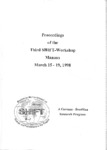Use este identificador para citar ou linkar para este item:
http://www.alice.cnptia.embrapa.br/alice/handle/doc/668387Registro completo de metadados
| Campo DC | Valor | Idioma |
|---|---|---|
| dc.contributor.author | VOB, K. | pt_BR |
| dc.contributor.author | FELDMANN, F. | pt_BR |
| dc.contributor.author | GASPAROTTO, L. | pt_BR |
| dc.contributor.author | LIEBEREI, R. | pt_BR |
| dc.date.accessioned | 2014-12-16T07:45:46Z | - |
| dc.date.available | 2014-12-16T07:45:46Z | - |
| dc.date.created | 1999-09-29 | pt_BR |
| dc.date.issued | 1998 | pt_BR |
| dc.identifier.citation | In: SHIFT - WORKSHOP, 3., 1998, Manaus. Proceedings... Bonn: BMBF, 1998. | pt_BR |
| dc.identifier.uri | http://www.alice.cnptia.embrapa.br/alice/handle/doc/668387 | pt_BR |
| dc.description | The root development of four tropical plant species has been studied in the initial phase of a polyculture near Manaus-AM (Brasil). According to these preliminary qualitative studies, it could be ascertained that the root systems of the selected species are significantly different in the phenotype and root distribution. Urucu revealed a huge rooting area especially near the soil surface. Brazil nut, cupuacu and rubber tree did not differ strongly from each another in root distance and spatial area but revealed differences in root distribution in soil depths. The inoculation with vesicular-arbuscular mycorrhiza fungi (AMF) did not result in different root growth and development patterns of the plants. Different levels of fertilization (30% and 100%) of recommended dose) may significantly enhance the spatial root area as shown for urucu.The results are discussed with regard to the spatial and temporal coincidence of the mycorrhizal symbionts in the field and the common field management practice. | pt_BR |
| dc.language.iso | eng | eng |
| dc.rights | openAccess | eng |
| dc.subject | Bertolletia excelsa | pt_BR |
| dc.subject | Urucu | pt_BR |
| dc.subject | Agrofloresta | pt_BR |
| dc.subject | Brasil | pt_BR |
| dc.subject | Amazonas | pt_BR |
| dc.subject | Manaus | pt_BR |
| dc.subject | Rubber tree | pt_BR |
| dc.subject | Species | pt_BR |
| dc.subject | Root | pt_BR |
| dc.subject | Growth | pt_BR |
| dc.subject | Fertilizers application | pt_BR |
| dc.title | Root development of tropical useful plants in the early state of plantation on degraded sites in Amazonia. | pt_BR |
| dc.type | Artigo em anais e proceedings | pt_BR |
| dc.date.updated | 2018-12-28T11:11:11Z | pt_BR |
| dc.subject.thesagro | Adubação | pt_BR |
| dc.subject.thesagro | Bixa Orellana | pt_BR |
| dc.subject.thesagro | Castanha do Para | pt_BR |
| dc.subject.thesagro | Cupuaçu | pt_BR |
| dc.subject.thesagro | Crescimento | pt_BR |
| dc.subject.thesagro | Cultivo Multiplo | pt_BR |
| dc.subject.thesagro | Espécie | pt_BR |
| dc.subject.thesagro | Fertilizante | pt_BR |
| dc.subject.thesagro | Hevea | pt_BR |
| dc.subject.thesagro | Micorriza Vesicular Arbuscular | pt_BR |
| dc.subject.thesagro | Seringueira | pt_BR |
| dc.subject.thesagro | Raiz | pt_BR |
| dc.subject.thesagro | Theobroma Grandiflorum | pt_BR |
| dc.subject.nalthesaurus | vesicular arbuscular mycorrhizae | pt_BR |
| dc.format.extent2 | p. 351-358. | pt_BR |
| riaa.ainfo.id | 668387 | pt_BR |
| riaa.ainfo.lastupdate | 2018-12-28 -02:00:00 | pt_BR |
| dc.contributor.institution | LUADIR GASPAROTTO, CPAA. | pt_BR |
| Aparece nas coleções: | Artigo em anais de congresso (CPAA)  | |
Arquivos associados a este item:
| Arquivo | Descrição | Tamanho | Formato | |
|---|---|---|---|---|
| Shift351.pdf | 6,41 MB | Adobe PDF |  Visualizar/Abrir |









